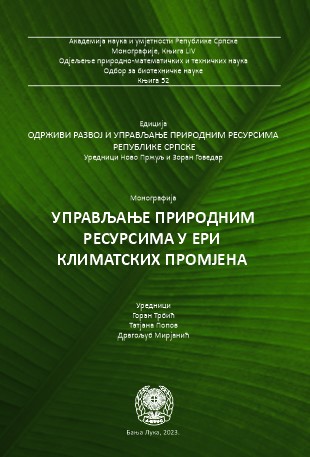Climate Change and Urban Climate in the Western Balkans
DOI:
https://doi.org/10.7251/EORU2308001SKeywords:
Climate change, extreme weather events, urban climate, air temperature, urban heat island, thermal comfort, Western BalkansAbstract
Global climate change is a process that inevitably affects the European continent, and thus the countries of the Western Balkans, i.e. Bosnia and Herzegovina, which is located in Southeast Europe. Increasingly intense and long-lasting heat waves (especially during the summer period), the occurrence of intense cold waves in winter, intense short-term precipitation periods, as well as long-term dry periods are the consequences of climate change characteristic of the Western Balkans, and thus Bosnia and Herzegovina. Such temperature and precipitation extremes have become more frequent in the last twenty‒thirty years, as evidenced by the annual air temperatures in all Western Balkan countries, i.e. it is clear that most of the last few years are the warmest years since the beginning of the 20th century. Due to such extreme weather events, it is clear that urban areas in the Western Balkans are under stronger, primarily thermal pressure, due to the already modified micro and local climate due to the characteristics of surface geometry. As a result, even higher temperatures and a significantly higher number of tropical nights occur during the heat waves, and have a direct threat to the health of the population and the economy in urban areas. This study analyzed 49 publications that directly or indirectly analyze, primarily thermal values and indices, in urban areas in the Western Balkans, in Banja Luka, Novi Sad, Belgrade, Tirana and Skopje. The results clearly show higher thermal pressure in urban areas, when it comes to temperatures and indices of thermal comfort, and maximum differences in relation to the natural environment occur in the most urbanized and industrial parts of the city. Also, analyzes of thermal risk on the quality and mortality of the population in urban areas show that increased mortality is in the category of residents over 65 years of age.
